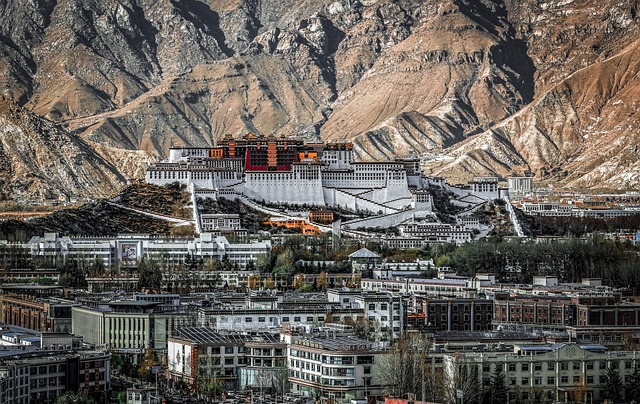Tibet is one of the most unique and awe-inspiring destinations in the world. Known for its rich culture, stunning landscapes, and spiritual significance, it's no surprise that many travelers dream of exploring this mystical region. However, one of the most common questions that comes up when planning a trip to Tibet is: How much does it cost to travel to Tibet?
In this blog, we'll break down the costs of traveling to Tibet, including transportation, tours, and other expenses you should consider to plan a budget-friendly and unforgettable trip.
1. Getting to Tibet: Flights & Trains
Before you can explore the vast Tibetan Plateau, you need to get there. Most travelers enter Tibet via Lhasa, the capital city, and the primary gateway into the region. There are two main ways to reach Lhasa: by flight or train.
Flights
Flights from major cities in China (such as Beijing, Chengdu, or Xining) to Lhasa can cost anywhere from 0 to 0 USD depending on the season and how far in advance you book. Prices tend to be higher during peak travel seasons (April to October), so booking early can help you secure the best fares.
Trains
Taking the train to Tibet is an unforgettable experience. The Qinghai-Tibet Railway offers a scenic route into Lhasa, with breathtaking views of the Tibetan Plateau. Train tickets generally range from to 0 USD depending on the class (soft sleeper, hard sleeper, etc.). While it takes longer than flying, many travelers opt for the train ride to enjoy the stunning scenery and acclimate to the altitude gradually.
2. Tibet Travel Permits & Visa
Tibet has strict entry regulations for foreign travelers. In addition to a Chinese visa, you'll also need a Tibet Travel Permit. This permit is issued by a licensed travel agency, and you can’t travel to Tibet independently. The cost of the Tibet permit is usually included in the price of a tour package, so if you're booking a tour, there’s no additional cost for the permit itself.
3. Tibet Tour Costs: Group vs. Private Tours
Once you arrive in Tibet, you'll likely want to join a guided tour to explore the region's major attractions, such as Potala Palace, Jokhang Temple, and Mount Everest Base Camp. The cost of a tour can vary significantly based on whether you choose a group tour or a private tour.
Group Tours
Group tours are the most affordable option. Typically, prices range from 0 to 0 USD per day per person, depending on the duration of the tour, the number of participants, and the inclusions. Group tours often include accommodation, transportation, and a guide. The more people in the group, the lower the cost per person.
Private Tours
For a more personalized experience, you can opt for a private tour. These tours generally cost between 0 to 0 USD per day, depending on the tour's length and complexity. A private tour gives you more flexibility in terms of the itinerary, but it’s a more expensive option.
4. Accommodation in Tibet
The cost of accommodation in Tibet can vary depending on where you're staying. In Lhasa, you'll find a range of options from budget guesthouses to luxury hotels.
- Budget Accommodation: Dormitory beds in hostels or basic guesthouses cost around to USD per night.
- Mid-Range Hotels: A standard 3-star hotel room will typically cost to 0 USD per night.
-
Luxury Hotels: High-end hotels in Lhasa, such as those with views of the Potala Palace, can range from 0 to 0 USD per night.
For those traveling on a budget, homestays or guesthouses are a great way to keep costs down while immersing yourself in local Tibetan culture.
5. Meals & Other Personal Expenses
Food in Tibet is affordable, with meals ranging from to USD depending on where you eat. Local Tibetan dishes like momo (dumplings), thukpa (noodle soup), and tsampa (roasted barley flour) are commonly found in restaurants, cafes, and street food stalls.
- Budget meals: Around to USD for a local meal in a restaurant.
- Mid-range meals: Between and USD for a more elaborate meal in a tourist-friendly restaurant.
Other personal expenses you may want to budget for include tips for your guide and driver (around to USD per day), souvenirs, and additional activities.
6. Altitude & Health Considerations
Tibet's high altitude means you need to plan carefully for your health and well-being. While the cost of medical care is generally affordable, it's essential to consider travel insurance, particularly for high-altitude regions. Insurance costs will vary but expect to pay around to 0 USD for a good policy.
7. Estimated Total Cost of a Trip to Tibet
Here’s an example breakdown of the cost for a 7-day trip to Tibet:
Final Thoughts: Is Tibet Worth the Cost?
Despite the expenses, many travelers agree that the unique experience of visiting Tibet is well worth the cost. The opportunity to see the Himalayas, experience Tibetan culture, and visit sacred sites like Mount Everest Base Camp makes Tibet a once-in-a-lifetime destination. By carefully planning your trip and managing your budget, you can enjoy the beauty and serenity of Tibet without breaking the bank.





